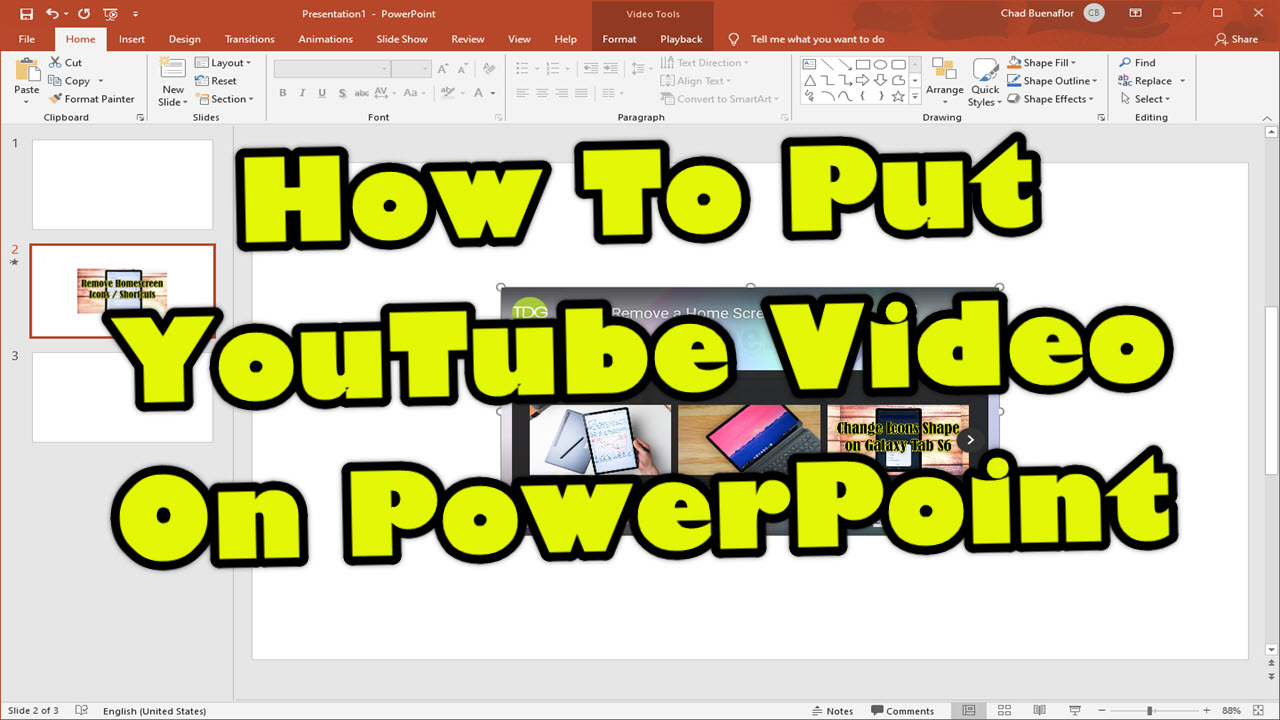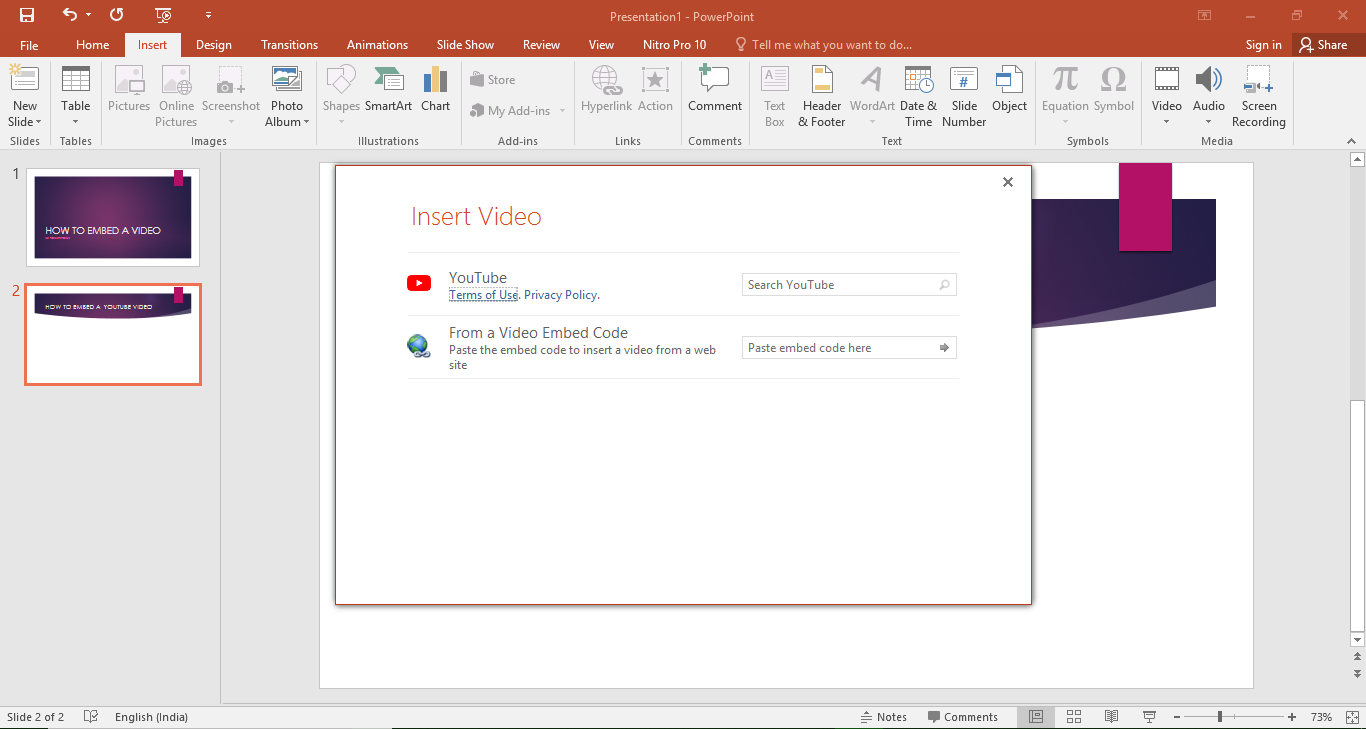
Playback: This menu help you decide what happens when the video actually plays.

Video Format: This menu provided options for colours, borders, effects and even the shape of the frame it runs it. Select your video in your slide and you should see a couple of new PowerPoint toolbar menu options appear:. Once you’ve inserted your video, PowerPoint offers a whole bunch of formatting and playback options.

Linked-to videos are risky if you’re going to present on a different computer – you might forget the video file.įormatting & Settings Once Your Video is Inserted Link to File works well if you’re able to use your own computer for your presentation but be very careful if you try to import your presentation onto a different computer as the link connection will be lost.Īdvantage: A local video file is embedded or referred-to in your PowerPoint document so you don’t need an Internet connection to play it.ĭisadvantages: Embedded videos take up a lot of space so your PowerPoint file is likely to become very large in size. Insert is simpler as you end up with everything in one file but it can mean your presentation file is huge in size. When you’ve found the right file, there are two options – press the little down arrow next to the Insert button to choose Insert which embeds the whole video file into your PowerPoint file or ‘Link to File’ which keeps the file separate but references it in PowerPoint. A new dialogue will appear with which you can browse your computer for the video file you want to insertĤ.

Find the video you want on Vimeo or YouTube and copy the URL (e.g.PowerPoint currently supports the insertion of online videos from YouTube and Vimeo – here’s how:. Method One: Embedding an Online Video From YouTube or Vimeo Embedding a video into your PowerPoint slides is really easy and their are two ways you can go about this each with their own pros and cons.


 0 kommentar(er)
0 kommentar(er)
